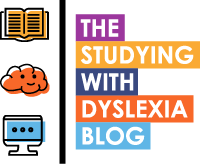We don’t like to see our dyslexic learners struggle with learning but it can equally be frustrating when they refuse support? Why would they refuse support and what can we do to bring them round?
As a parent, one of the most frustrating moments I experienced with my kids where when I saw them struggling with something and I thought I knew what they needed in order to overcome that struggle!
Imagine what it was like in my house when my daughter was diagnosed with dyslexia at a time when I was working with a company that produced assistive technology for dyslexic students and my daughter just wasn’t interested!
It may be difficult to understand, but just because we, as ‘significant adults’, think we know of ways to overcome challenges, it doesn’t mean to say that the kids in our care will listen and adopt what we think is right for them.
It is a really common theme in my conversations with parents about their kids who don’t want to adopt the use of assistive technology to help them with their dyslexia at school or at home. It may seem ‘bonkers’ for a child to turn down any kind of support that will help them at school but there are likely to be some powerful reasons for doing so.
So why would a child refuse assistive technology support?
Here are some thoughts as to why I think young people may not want to use technology that will help them to study better:
It is something else that they have to get their heads around and that is tiring.
It is human nature to want to help someone who we think are struggling. We experience the urge to dive in to assist and sometimes we wonder why that assistance hasn’t been received with a gracious spirit. In the case of a dyslexic student, presenting something new, even if it is supposed to help, could cause anxiety. The dyslexic learner may be experiencing levels of fatigue that comes from having to spend more time and effort on processing information that someone without dyslexia is not experiencing. So, if they feel that they are overburdened with stuff to cognitively deal with, then the prospect of having to learn something new will not be attractive because it requires more cognitive brain power at a time when it may feel like it is being used up.
To position assistive technology as a solution to the needs of a dyslexic student, one needs to ensure that the student is open to finding ways to address their challenges.
It is something that marks them out as different amongst when they are doing their best to blend in and keep up at school.
I believe that this is a common theme. My daughter, for example, was offered a laptop for use in class and exams from the age of 12. This meant her being the only person in class using a laptop. It made her stand out and for a child with dyslexia, the last thing they want to do is stand out for all the ‘wrong’ reasons.
She was worried about ridicule and judgement from peers despite the fact that using technology would really help her with her studies. I am glad to say that for her, these feelings didn’t last long as she could see the benefit but that isn’t the case for all.
As parents or teachers, we need to take some time to listen and understand the feelings of dyslexic learners and encourage the dyslexic learner to articulate what their struggles are and to ask for what they need as well as encourage the learner to talk about their concerns about how using technology may affect them socially and academically within the school environment.
They haven’t articulated or accepted what their challenges are to themselves and so are not ready to adopt solutions presented by others.
Have you ever felt overwhelmed but in that moment struggled to know why? Having dyslexia in school can bring about feelings of anxiety, overwhelm and stress. The brain could be ‘over-cooking’ feelings of being emotionally unsafe within the classroom and the student will be aware of what they are feeling but haven’t quite linked it with causation.
For students in this position, it can be difficult to accept solutions to challenges from other people who think that they know what is happening for the student and is trying to push an assistive technology solution on them.
The reality is that no two students with dyslexia have the same presentations of strengths and weaknesses, so we, as adults, can’t possibly know exactly what is happening.
Sometimes a student needs time to work out what is happening for them.
In the video below, I was struck by the strategy of one school who chose to make assistive technology available to those who they thought COULD need it but left it to the student to choose to use it.
Deputy Head of Harrow Way Community School outlines how they make the use of a reader pen available for students who they think may benefit from using this technology, with the choice of using it being down to the student.
What I like about what Nicola Pearce shared in the video was how the student had the choice to use technology that could help them. This strategy has been proven to be successful in other schools too as shown in an earlier article regarding having a ‘toolbox’ approach to supporting dyslexic learning.
It is important to give a child space and time to understand for themselves what their educational challenges are and to allow them to try out different assistive technology solutions to see which offer the best fit for their needs.
What are your thoughts?
I have listed just some of the reasons why a dyslexic learner might refuse to use assistive technology. Can you think of others? Let me know in the comments below.




